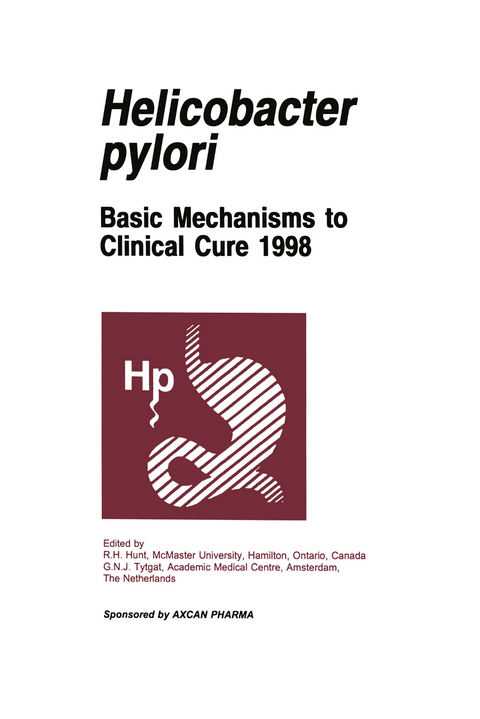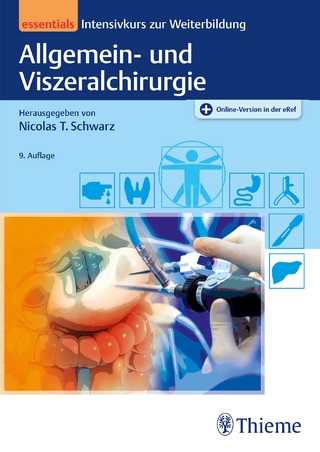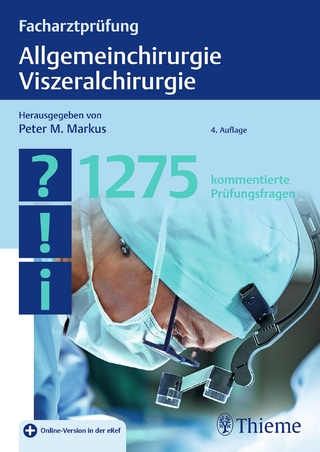
Helicobacter pylori
Springer (Verlag)
978-94-010-6046-2 (ISBN)
The explosion of new information on Helicobacter pylori-related disease, both in the basic sciences and in clinical medicine, has continued to progress at an unprecedented pace. In many instances H. pylori infection, both in man and in the laboratory animal, has become a model to investigate fundamental biological issues such as micro-organism-host interactions, intracellular signalling, development of mucosal atrophy, mechanism of microbial resistance, disease modifying factors etc. In view of this bewildering flood of new information, the time was considered right to organize yet another update on H. pylori in the successful series 'Basic mechanisms to clinical cure' to define the 'state-of-affairs' in H. pylori research at this time. Our main objective was to integrate this new information in a series of top-quality presentations and discussions between investigators and clinicians, addressing all aspects of H. pylori research, and to review the current position and future research direc tions. The format included state-of-the-art presentations by world experts heavily involved in H. pylori research, followed by in-depth discussion on intriguing or controversial issues. The topics discussed were grouped according to the leading theme: characteristics of the organism, mode of transmission, mechanisms of H. pylori-induced inflammation, causation of disturbances of gastric secretory and motor function, aspects of clinical presentation and management, problems related to H. pylori-associated gastric adenocarcinoma and MALT-lymphoma, novel aspects of antimicrobial therapy, and vaccination. The meeting concluded with a synoptic agenda of suggested future studies for the microbiologist, the histopathologist and the clinician.
Section I. Helicobacter pylori — THE ORGANISM.- 1 New Helicobacter species.- 2 The origin of virulence in type I strains of Helicobacter pylori.- 3 vacA polymorphism.- 4 The interaction of cag+Helicobacter pylori strains with their hosts.- 5 Molecular mimicry between Helicobacter pylori and the host.- 6 Considerations of virulence by Helicobacter pylori.- Section II. Helicobacter pylori — TRANSMISSION.- 7 The faecal—oral route — a critical look.- 8 Helicobacter pylori: oro—oral, oro—gastric transmission: a critical look at the evidence.- 9 Vectors for the transmission of Helicobacter pylori.- Section III. Helicobacter pylori — INFLAMMATION.- 10 The host cell response to Helicobacter pylori attachment.- 11 Changes in intracellular signalling following Helicobacter pylori infection of gastric epithelial cells.- 12 Helicobacter pylori — interactions with phagocytes.- 13 Th1/Th2 lymphocyte responses in Helicobacter infections.- 14 Epithelial cell turnover and apoptosis.- 15 Cytokine-enhanced, Helicobacter pylori-induced, epithelial cell apoptosis.- Section IV. Helicobacter pylori — FUNCTIONAL SECRETORY AND MOTOR DISTURBANCES.- 16 Acid-adaptive mechanisms of gastric Helicobacter.- 17 Helicobacter pylori and gastroduodenal secretions.- 18 Relevant factors in regulating endocrine, parietal and chief cells.- 19 Histamine and Helicobacter pylori: are we closer to the answer?.- 20 The effect of Helicobacter pylori on enterochromaffin-like (ECL) cell function.- 21 Mast cells and duodenal bicarbonate secretion.- 22 The impact of Helicobacter pylori infection on gastric neuromuscular function in the rat: basic observations and clinical implications for our understanding of functional dyspepsia.- Section V: Helicobacter pylori — PATHOLOGICAL ASPECTS.- 23 Whatdrives the pattern of activity of the inflammatory reaction? Differences in antrum and corpus.- 24 Defining atrophic gastritis and grading gastric atrophy: new challenges beyond the Sydney System.- 25 Cardia mucosa gastritis (carditis): pathogenesis, correlation with gastritis of other sites and clinicopathological relevance.- Section VI: CLINICAL ASPECTS OF Helicobacter pylori INFECTION.- 26 Helicobacter pylori and non-ulcer dyspepsia — a critical look.- 27 Implications of Helicobacter pylori: ‘test-and-treat’ approach in a primary-care setting.- 28 Prerequisites of an adequate approach to dyspepsia: differences between the west and the east.- 29 The Helicobacter pylori—non-steroidal anti-inflammatory drug interaction: consensus at last?.- 30 Helicobacter pylori infection and coronary heart disease: a critical look.- 31 Pitfalls in Helicobacter pylori diagnosis.- Section VII. Helicobacter pylori-ASSOCIATED GASTRIC CANCER AND LYMPHOMA.- 32 An overview of Helicobacter pylori epidemiology studies.- 33 Nitrogen oxides and the gastric precancerous process.- 34 Helicobacter pylori-associated gastric cancer: is population-based screening and therapy realistic?.- 35 Gastric carcinogenesis: when is the point of no return?.- 36 Atrophy, metaplasia and dysplasia — a risk for gastric cancer: are they reversible?.- 37 Lessons from ongoing intervention studies.- 38 Criteria for the diagnosis of mucosa-associated lymphoid tissue lymphoma.- 39 Early and long-term results of Helicobacter pylori cure of MALT lymphoma — what are the pitfalls?.- Section VIII. Helicobacter pylori — TREATMENT ISSUES.- 40 Nitroimidazole metabolism and resistance in Helicobacter pylori.- 41 Bioavailability of antimicrobials after oral and parenteral administration.- 42 Antimicrobial resistancein Helicobacter pylori: a global overview.- 43 Does bismuth prevent antimicrobial resistance of Helicobacter pylori?.- 44 Variability in the outcome of treatment of Helicobacter pylori infection: a critical analysis.- 45 Novel therapies for Helicobacter pylori eradication.- 46 Towards monotherapy — what progress? First results with a new single ‘triple’ capsule.- 47 Towards vaccination: what progress?.- Section IX. THE FUTURE OF Helicobacter pylori RESEARCH.- 48 The future of Helicobacter pylori research: the agenda for microbiologists.- 49 The future of Helicobacter pylori research: the agenda for histopathologists.- 50 Helicobacter pylori: the clinical agenda.
| Zusatzinfo | XX, 507 p. |
|---|---|
| Verlagsort | Dordrecht |
| Sprache | englisch |
| Maße | 160 x 240 mm |
| Themenwelt | Medizinische Fachgebiete ► Chirurgie ► Viszeralchirurgie |
| Medizinische Fachgebiete ► Innere Medizin ► Gastroenterologie | |
| Medizin / Pharmazie ► Medizinische Fachgebiete ► Mikrobiologie / Infektologie / Reisemedizin | |
| Medizin / Pharmazie ► Medizinische Fachgebiete ► Onkologie | |
| Studium ► Querschnittsbereiche ► Infektiologie / Immunologie | |
| ISBN-10 | 94-010-6046-0 / 9401060460 |
| ISBN-13 | 978-94-010-6046-2 / 9789401060462 |
| Zustand | Neuware |
| Haben Sie eine Frage zum Produkt? |
aus dem Bereich


